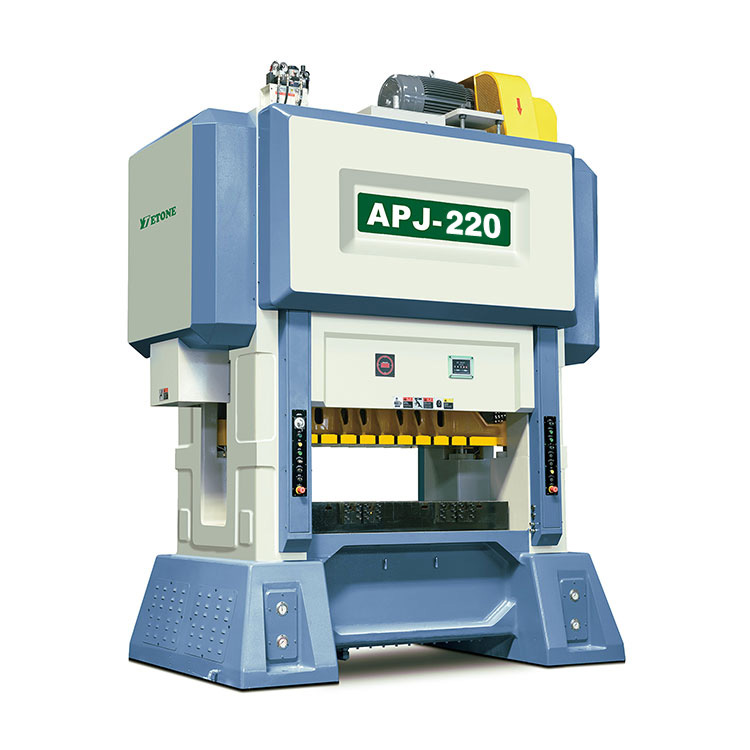High-speed punch press is an automated equipment used for mass production, widely used in metal processing, stamping, forming and other fields. Its principle and structure are as follows:
1. Principle
The working principle of high-speed punch press is to punch the metal sheet into the desired shape under pressure through the punch of the punch press. The core working part of the punch press is to achieve metal deformation through high-frequency punching action. Its working process usually includes:
Feeding: The material is fed into the working area of the punch press through the automatic feeding system.
Punching: The high-speed punch press transmits kinetic energy to the punch, so that the punch quickly descends and cooperates with the die to punch the workpiece.
Discharging: The workpiece after punching will be automatically discharged to prepare for the next punching.
High-speed punch presses usually have high speed, high production efficiency and high precision, and are suitable for punching operations that require fast and efficient punching.
2. Structure
The structure of the high-speed punch press mainly includes the following parts:
Frame: The frame is the main supporting structure of the punch press, which bears the pressure during the punching process and ensures the stability of the punching process. Generally, cast steel or steel plate welding structure is adopted to ensure its strength and rigidity.
Flywheel and crankshaft: The flywheel is used to store energy and transmit power to the punch through the crankshaft. The flywheel of the high-speed punch press is usually designed to be larger to ensure a stable energy supply when running at high speed.
Punch and die: The punch is one of the core components of the punch press. By cooperating with the die, it completes the processing operations such as punching and shearing of the workpiece. The descent speed of the punch is very fast, thus ensuring high production efficiency.
Slider system: The slider is a component connecting the punch to the crankshaft. It is usually installed in the frame and can move in the vertical direction through the connected connecting rod system. The movement of the slider enables the punch to exert sufficient pressure on the die.
Power system: Including electric motors, reducers, etc., to provide a driving source. The power system of the high-speed punch press needs to be able to respond quickly to ensure the realization of high-speed impact action.
Automatic feeding system: In order to achieve mass production, the automatic feeding system is usually used with a high-speed punch press. It can automatically feed the metal sheet into the workbench and accurately position it to ensure the accuracy and consistency of each punching.
Discharging system: The waste after stamping needs to be removed in time. The discharging system moves the waste out of the work area by pneumatic or mechanical means to keep the production line smooth.
3. Features
High speed: The stamping speed of high-speed punch press is usually high, reaching hundreds of times per minute or even more, which is suitable for mass production.
High precision: Due to the high speed and precise control system of high-speed punching machines, the precision of stamping products can be guaranteed.
Automation: Many high-speed punching machines are equipped with automatic feeding and discharging systems to reduce manual intervention and improve production efficiency.
4. Application Fields
High Speed Punch Press is widely used in electronics, automobiles, home appliances, medical equipment and other industries to perform operations such as stamping, shearing and forming of metal sheets and produce various precision parts and structural parts.
High Speed Punch Press can achieve high-efficiency and high-precision mass production, reduce labor costs, and improve the automation level of the production line.
